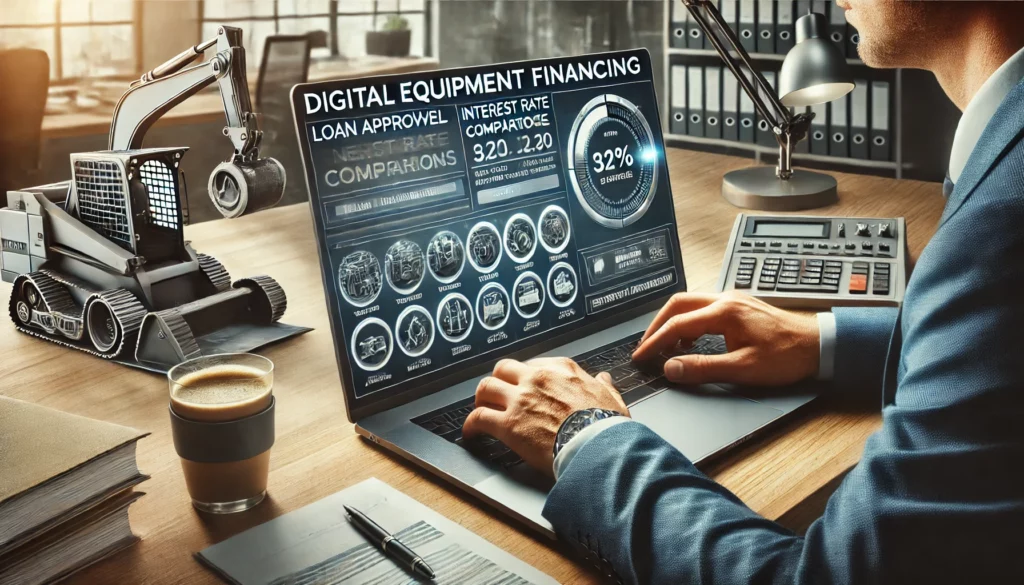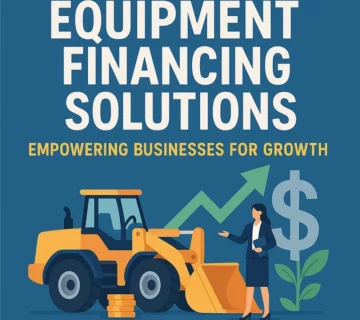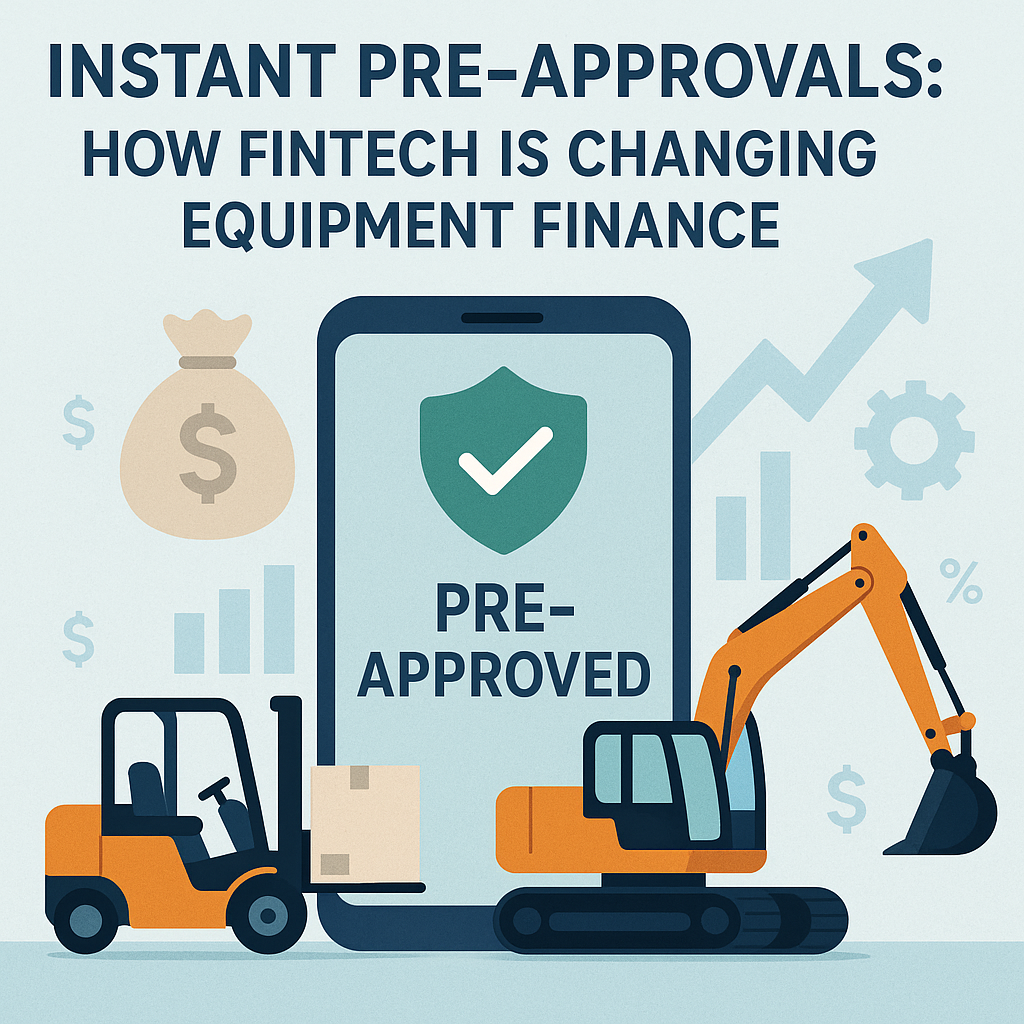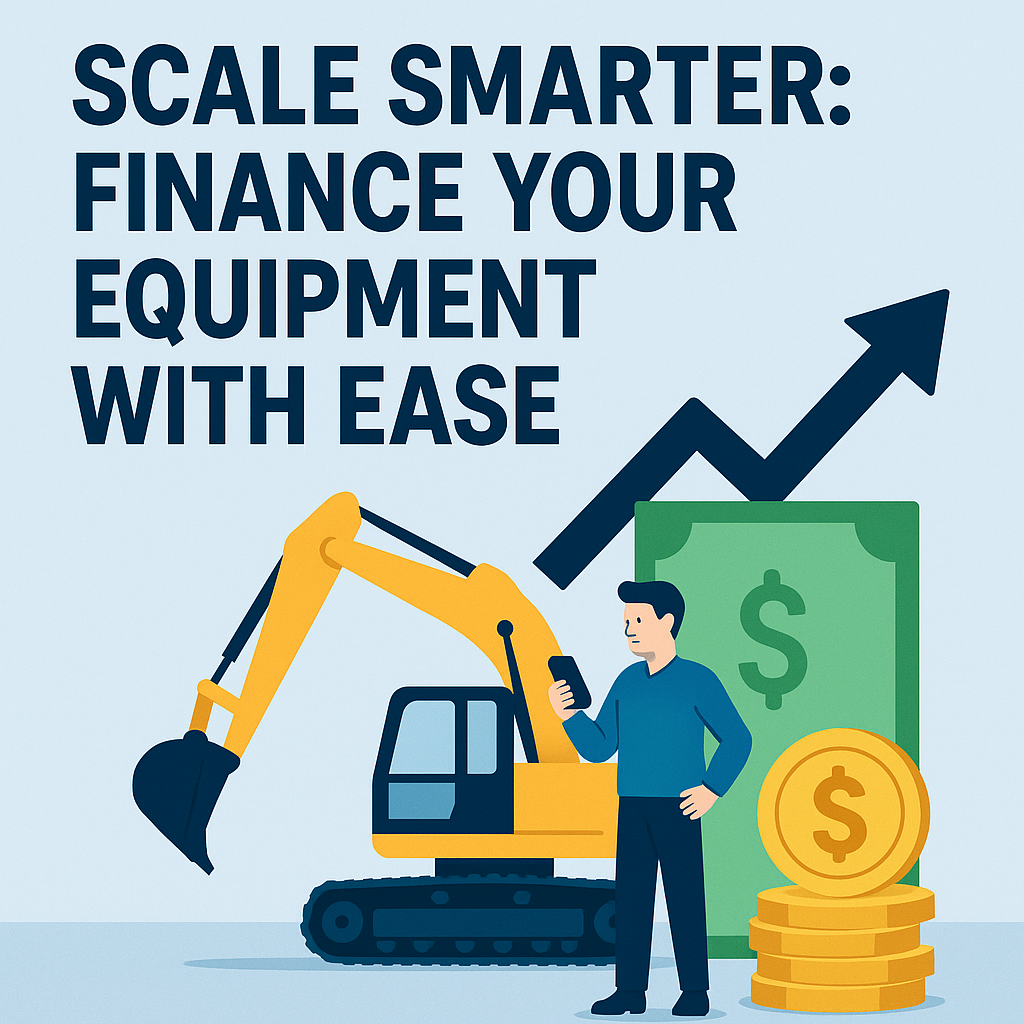How Digital Platforms Are Simplifying Equipment Financing
Introduction
Businesses that once struggled with time-consuming paperwork, lengthy approval processes, and rigid financing structures can now secure funding through streamlined online solutions. Digital platforms have introduced automation, data analytics, AI-driven credit assessments, and seamless integration with financial institutions, making business equipment financing more accessible than ever.
This article explores how digital platforms are transforming financing for equipment, the key benefits they offer, and how businesses can leverage them to acquire essential machinery, vehicles, or technology.
1. Understanding Equipment Financing
Equipment financing refers to the process of obtaining funds to purchase or lease business equipment. This can include machinery, vehicles, IT infrastructure, and other necessary tools. Traditional financing options often involve banks and financial institutions, requiring substantial documentation and credit evaluation.
Types of Equipment Financing
- Equipment Leasing – Businesses rent equipment for a specific period, avoiding high upfront costs.
- Equipment Loans – Companies secure loans to purchase equipment, with repayment over time.
- Vendor Financing – Manufacturers or dealers provide financing options directly to customers.
Digital platforms have simplified all these options by offering a seamless application process, instant approvals, and flexible repayment terms, making small business equipment financing more accessible than ever.
2. The Role of Digital Platforms in Equipment Financing
Digital platforms act as intermediaries between businesses seeking financing for equipment and lenders, offering a range of services to make the process more efficient.
Key Features of Digital Equipment Financing Platforms
- AI-Powered Credit Evaluation – Faster and more accurate creditworthiness assessment.
- Automated Loan Processing – Minimizing paperwork and reducing manual intervention.
- Instant Quotes & Approvals – Businesses receive business equipment financing options within minutes.
- Seamless Integration – Digital platforms connect with banks, vendors, and credit bureaus.
By leveraging technology, these platforms remove the inefficiencies of traditional financing, making capital more accessible to businesses of all sizes.
3. Benefits of Digital Equipment Financing Platforms
3.1 Faster Approvals and Fund Disbursement
Traditional equipment financing can take weeks for approval. Digital platforms use AI and big data analytics to assess creditworthiness in real time, leading to approvals within hours or even minutes.
3.2 Minimal Paperwork
Digital platforms reduce the need for excessive documentation. Businesses can upload documents digitally, and automated systems verify them instantly.
3.3 Improved Accessibility for Small Businesses
Many small businesses struggle to secure loans from traditional banks due to limited credit history. Digital lenders use alternative data points, such as cash flow analysis, to assess risk, allowing more businesses to qualify for small business equipment financing.
3.4 Flexible Financing Options
Digital platforms offer customized repayment plans based on revenue patterns, seasonal fluctuations, and industry-specific needs.
3.5 Transparent and Competitive Pricing
Many digital lenders provide comparison tools, allowing businesses to review multiple lease financing equipment options before making a decision.
4. How AI and Machine Learning Enhance Equipment Financing
4.1 AI-Driven Credit Scoring
Traditional credit scoring methods rely on financial history, which can be limiting for new businesses. AI-powered systems analyze real-time financial behavior, market trends, and business performance to determine creditworthiness.
4.2 Predictive Risk Assessment
Machine learning models predict potential defaults by analyzing past data and current financial indicators, helping lenders make informed decisions.
4.3 Automated Underwriting
AI automates the underwriting process, reducing human bias and expediting loan approvals.
4.4 Chatbots and Virtual Assistants
AI-powered chatbots assist businesses with business equipment financing inquiries, application guidance, and loan tracking, enhancing customer experience.
5. The Impact of Digital Marketplaces on Equipment Financing
Online marketplaces connect multiple lenders with borrowers, offering a range of financing for equipment options. These platforms provide:
- Side-by-side loan comparisons – Businesses can evaluate interest rates, terms, and fees.
- Automated Matching – AI matches businesses with the best financing partners.
- Instant Prequalification – Applicants receive real-time financing options based on their profile.
These marketplaces empower businesses with greater transparency and choice.
6. Digital Equipment Leasing vs. Traditional Leasing
6.1 Lower Costs with Digital Leasing
Online platforms often eliminate intermediaries, reducing lease financing equipment costs.
6.2 Paperless Transactions
E-signatures and digital contracts streamline the leasing process.
6.3 Usage-Based Leasing
Some digital platforms offer pay-as-you-use leasing, where businesses pay only for the time they use the equipment.
7. Challenges and Risks of Digital Equipment Financing
7.1 Cybersecurity Concerns
As digital platforms handle sensitive financial data, the risk of cyberattacks remains a concern. Robust encryption and cybersecurity measures are crucial.
7.2 Fraudulent Lenders
Not all online lenders are trustworthy. Businesses must conduct due diligence before choosing a business equipment financing provider.
7.3 Regulatory Compliance
Digital lending operates in a highly regulated environment. Platforms must comply with financial laws to ensure transparency and legality.
8. Future Trends in Digital Equipment Financing
8.1 Blockchain for Secure Transactions
Blockchain technology enhances transparency and security in loan agreements and transactions.
8.2 Embedded Financing
Lease financing equipment is increasingly being integrated into vendor platforms, allowing businesses to finance purchases directly at the point of sale.
8.3 AI-Driven Financial Planning
Advanced AI will provide predictive financial planning, helping businesses make smarter financing for equipment decisions.
FAQs on How Digital Platforms are Simplifying Equipment Financing
Q1: How do digital platforms make equipment financing easier?
Digital platforms use AI-driven credit assessments, automated processes, and instant approvals, making equipment financing faster and more accessible.
Q2: Can small businesses with no credit history get equipment financing?
Yes, digital lenders use alternative credit scoring methods, such as cash flow analysis, to assess eligibility, making it easier for small business equipment financing.
Q3: Are online equipment financing platforms safe?
Reputable digital financing platforms use encryption and cybersecurity measures to protect user data. However, businesses should verify lender legitimacy before applying.
Q4: What is the difference between equipment leasing and equipment loans?
- Leasing: Businesses rent equipment for a fixed period without ownership.
- Loan: Businesses receive funds to purchase equipment and repay over time.
Q5: How long does it take to get approved for equipment financing online?
Many digital platforms offer instant prequalification, with approvals taking anywhere from a few minutes to 24 hours.
Q6: What are the risks of digital equipment financing?
Cybersecurity threats, fraudulent lenders, and regulatory issues are potential risks. Businesses should choose reputable platforms with strong security measures.
Conclusion
Digital platforms have transformed equipment financing by making it faster, more accessible, and cost-effective. With AI-driven credit assessments, instant approvals, and flexible financing options, businesses no longer have to endure the slow, bureaucratic processes of traditional lenders. However, due diligence is essential to ensure security and compliance with regulatory standards. As business equipment financing continues to evolve, businesses can expect even more innovative solutions that simplify access to essential equipment.





No comment